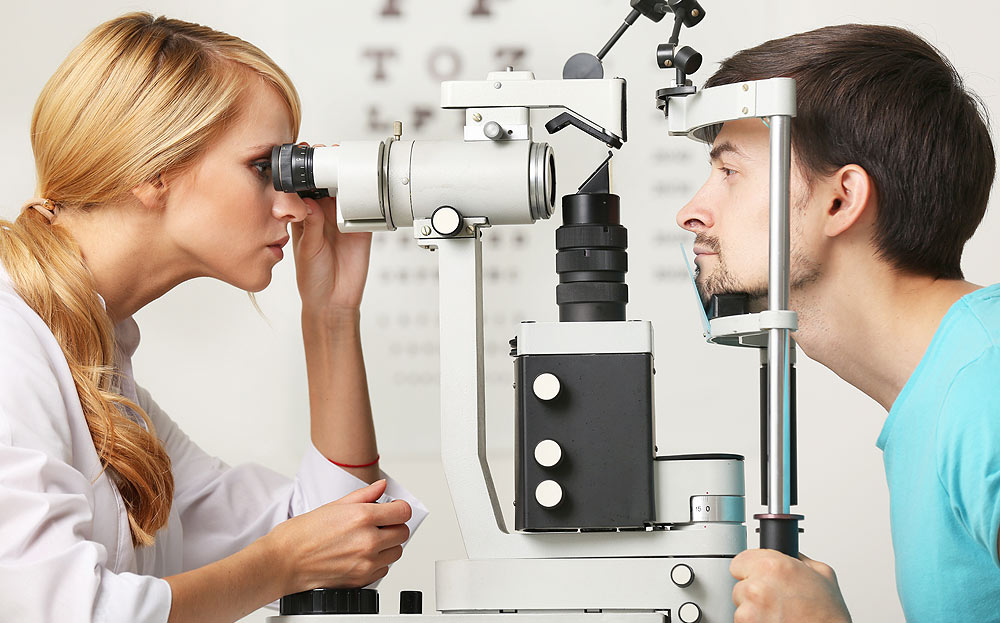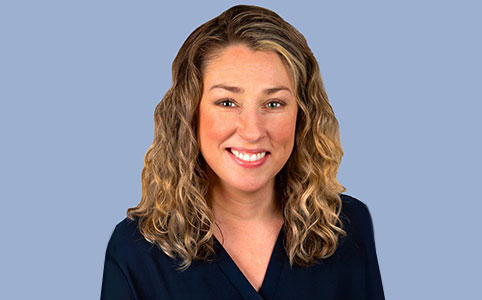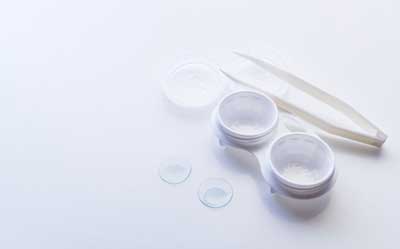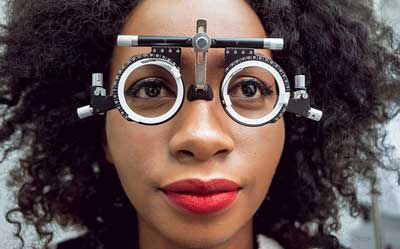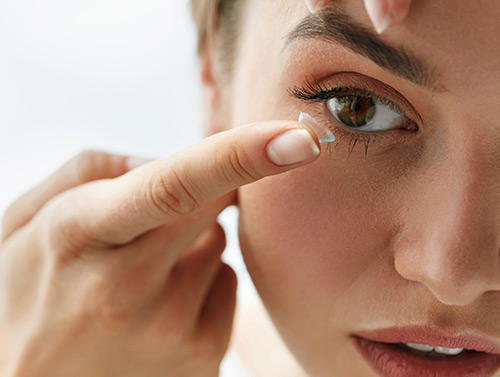
Our optometrists are experts at fitting patients with contact lenses, and we offer a full array of contact lenses from the leading manufacturers, including Alcon, Bausch & Lomb, CooperVision, Acuvue, Westcon, and highly regarded custom lens manufacturers.
Contact lenses come in a wide variety of types:
- Soft
- Rigid gas-permeable
- Extended-wear
- Disposable
- Bifocal
- Astigmatic
- Tinted
Can’t wear contacts?
An explosion of new, state-of-the-art contact lens designs addresses the most common contact lens problems patients have had in the past:
- Can’t read up close
- Dry eye and irritation
- Solutions allergies
- Astigmatism
- Larger or smaller eye size
- More serious conditions
Check out these recent changes to contact lenses!
Can’t read up close
The number one reason people drop out of wearing contacts is that they can’t see up-close any longer; they give up because of problems reading. New options in daily disposable contact lenses have made it possible for people with “vision over 40” reading issues to wear contacts again. Several new brands of bifocal contact lenses are solving the contact lens dilemma for many of our 40+ patients.
Dry eye and irritation
The new daily disposables also mean a big improvement in comfort level for patients with dry eye and irritation, the second largest group of patients with problems wearing contact lenses.
Silicone hydrogel lenses and high oxygen permeable lenses are helpful to many people who suffer from irritation due to lack of oxygen. Patients with eye irritation are finding these lenses often work for them.
Solutions Sensitivities
The expansion of new options in daily disposable contact lenses, made of new types of plastics, means that patients don’t have the dependency on solutions that they did in the past.
Astigmatism
Many of the new lenses that have been developed in the past few years address astigmatism. Our optometrists are finding that patients who couldn’t see well with contacts because of astigmatism are experiencing good correction with the new lenses.
Larger or Smaller Eye Size
We also work with a high-tech, computer-aided design laboratory that makes custom-fitted soft lenses. They can produce a special soft lens for a patient: any size, shape or prescription the patient needs. This is an exciting development for patients who’ve been told they are too hard to fit: people with relatively normal vision, just a difference in eye size. We have recently fitted lenses as small as 13 millimeters for people with small eyes, and as large as 15.8 millimeters for patients with large eyes, compared to the commercially available lenses that range from 13.8 to 14.5 millimeters in diameter.
More Serious Eye Conditions
A smaller group of patients is affected by more serious eye conditions. For instance, in the past five years, semi-scleral lenses have been introduced to compensate for misshapen corneas. Infections can cause misshapen eyes, most commonly herpes simplex virus. And, accidents to the eye can also cause poorly shaped corneas.
Some patients have serious problems such as extremely high astigmatism or keratoconis.
Finally, patients who have had refractive surgery in the past are finding that their prescription has changed; they want to wear contacts again, but their corneal shape has changed.
For these three groups of patients, the optometrists at Casco Bay EyeCare often turn to semi-scleral contact lenses. Semi-scleral lenses are hard lenses the size of a typical soft lens, and can help correct the problem of poorly shaped corneas. There have been many developments in this contact lens type, particularly in the past few years.
The semi-scleral lenses also help with extreme dryness issues: the lenses completely cover the cornea and bathe the cornea in a saline solution.
So—if you have not been able to wear contact lenses in the past, or if you have experienced some of these vision issues, please contact us. We may be able to fit you with a new contact lens design that will give you options for good vision.

